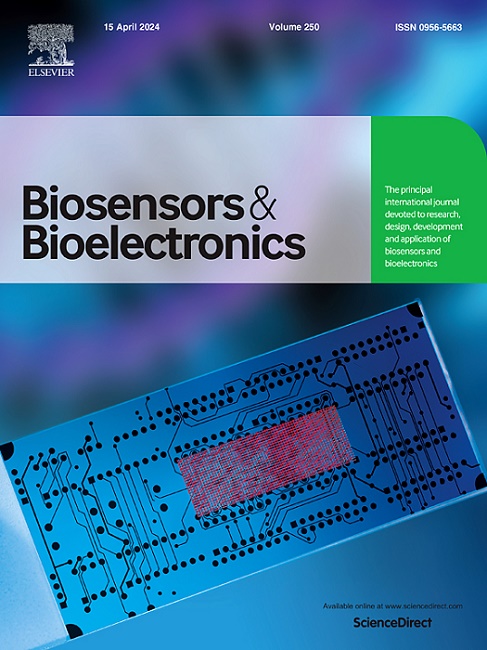Synergistic optimization strategies for the development of multienzymatic cascade system-based electrochemical biosensors with enhanced performance
IF 10.7
1区 生物学
Q1 BIOPHYSICS
引用次数: 0
Abstract
Multienzymatic cascade system (MCS) strategies have been a topic of growing interest in the electrochemical biosensor research field owing to their many advantages. By combining two or more enzymes in an appropriate manner, MCS approaches can extend the range of detection for particular analytes while improving the overall efficiency of biocatalytic cascade reactions. Compared with mono-enzyme biosensors, the integration of MCS and electrochemical biosensor platforms is inherently more challenging owing to the increased complexity of the resultant system. In recent years, substantial progress in the development of MCS-based electrochemical biosensors with enhanced analytical performance has been made. This review provides an overview of the types of MCS strategies and their biosensor applications, together with a summary of synergistic optimization approaches that can help improve key parameters including sensitivity, selectivity, and stability when designing MCS-based electrochemical biosensors. These discussions include examples of published biosensor platforms (2016–2024) while also surveying key advances in associated research areas including redox mediators/enzyme co-immobilization, enzyme engineering, multienzyme spatial regulation, enzyme-nanozyme integration and others. Lastly, a brief overview of current challenges and future perspectives pertaining to MCS-based electrochemical biosensor design is provided.
求助全文
约1分钟内获得全文
求助全文
来源期刊

Biosensors and Bioelectronics
工程技术-电化学
CiteScore
20.80
自引率
7.10%
发文量
1006
审稿时长
29 days
期刊介绍:
Biosensors & Bioelectronics, along with its open access companion journal Biosensors & Bioelectronics: X, is the leading international publication in the field of biosensors and bioelectronics. It covers research, design, development, and application of biosensors, which are analytical devices incorporating biological materials with physicochemical transducers. These devices, including sensors, DNA chips, electronic noses, and lab-on-a-chip, produce digital signals proportional to specific analytes. Examples include immunosensors and enzyme-based biosensors, applied in various fields such as medicine, environmental monitoring, and food industry. The journal also focuses on molecular and supramolecular structures for enhancing device performance.
 求助内容:
求助内容: 应助结果提醒方式:
应助结果提醒方式:


